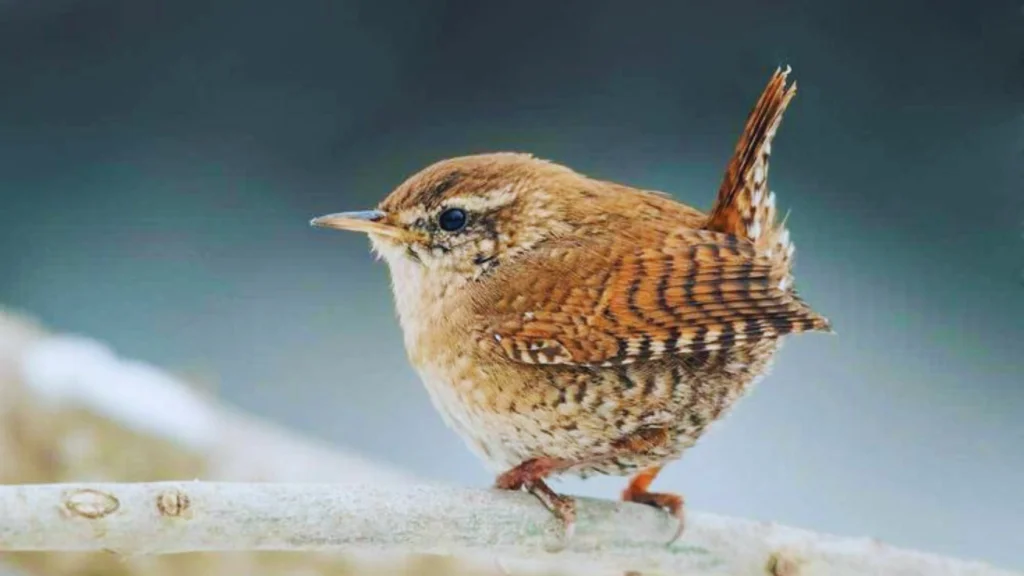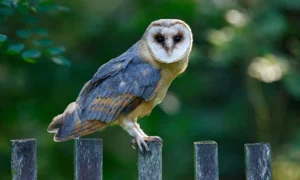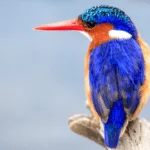Imagine a world where every feathered creature carries a hidden message, a secret language whispered on the wind. In this realm of symbolism, the wren emerges as a tiny avian spirit, brimming with significance and meaning.
From ancient cultures to modern spiritual beliefs, the wren has captivated the human imagination with its vibrant symbolism. It is a messenger of joy and happiness, reminding us to embrace the fleeting moments of bliss in our lives. With resourcefulness and adaptability, the wren teaches us to navigate the ever-changing tides of existence.
Its songs and chirps hold a power that transcends the boundaries of language, connecting us to a deeper realm of understanding. In Native American traditions, the wren guides us through nature’s wilderness, offering wisdom and guidance along the way. As a symbol of hope and optimism, the wren encourages us to embrace the beauty of life’s journey.
Join us as we delve into the enchanting world of wren symbolism and unravel the secrets of these tiny avian spirits.
Key Takeaways
- Wrens symbolize joy, happiness, and embracing fleeting moments of bliss.
- They teach us to navigate the ever-changing tides of existence.
- Wrens are associated with wisdom, transformation, and protection in various mythologies and cultures.
- They remind us of the interconnectedness of all things and the importance of nurturing relationships.
Cultural and Historical Significance of Wrens
Wrens have held cultural and historical significance for centuries. These tiny avian spirits have captivated the human imagination across cultures and time periods.
In Celtic mythology, the wren was considered the king of all birds, symbolizing wisdom, transformation, and protection. The ancient Greeks associated wrens with the goddess Athena, the embodiment of wisdom and strategy. In Native American cultures, wrens were seen as messengers of the spirits and were believed to bring good luck and fortune.
Throughout history, wrens have also played a role in folklore and traditions. In England, the wren was associated with the winter solstice and was seen as a symbol of good luck. Every year, on Saint Stephen’s Day, people would participate in the ‘Hunting of the Wren,’ where they would chase and capture a wren, then parade it around the village for good fortune in the coming year. This tradition dates back to pagan times and is still celebrated in some parts of the UK today.
The wren’s small size and ability to navigate through dense foliage have also made it a symbol of agility, resourcefulness, and adaptability. It serves as a reminder that even the smallest creatures can have a significant impact and teach us valuable lessons.
In conclusion, wrens have rich cultural and historical significance, representing wisdom, protection, luck, and adaptability. These tiny avian spirits continue to inspire and fascinate across different cultures and time periods, reminding us of the interconnectedness between humans and the natural world.
Symbolism in Different Spiritual Beliefs
Immerse yourself in the world of different spiritual beliefs and discover the profound meanings behind the wren’s presence.
In various spiritual traditions, the wren holds a special place, symbolizing different aspects of life and spirituality. In Celtic mythology, the wren was associated with the gods of the Otherworld, known for their wisdom and magic. They believed that seeing a wren was a sign of good luck and protection.
In Native American spirituality, the wren is seen as a messenger from the spirit world. It is believed that when a wren crosses your path, it brings a message from the ancestors or the divine. The wren’s small size and quick movements are also seen as a reminder to stay agile and adaptable in life.
In Buddhism, the wren is a symbol of mindfulness and being present in the moment. Its ability to flit from branch to branch effortlessly represents the practice of meditation and being fully aware of one’s surroundings. The wren teaches us to be in tune with our inner selves and to find peace in the present moment.
No matter the spiritual belief, the wren’s symbolism reminds us of the interconnectedness of all things and the importance of paying attention to the subtle signs and messages that surround us. So next time you spot a wren, take a moment to reflect on its deeper significance and the wisdom it brings.
Wrens as Messengers of Joy and Happiness
When you encounter a wren, its presence fills you with boundless joy and an overwhelming sense of happiness. These tiny avian spirits are often seen as messengers of joy and happiness in various spiritual beliefs. Their joyful melodies and vibrant colors are believed to bring good fortune and positive energy into your life. Wrens symbolize the simple pleasures and the beauty found in everyday moments. Their cheerful chirping and lively movements remind you to appreciate the little things that bring happiness into your life.
In Native American cultures, wrens are seen as symbols of happiness and contentment. They are believed to bring good luck and prosperity to those who encounter them. The sight of a wren is said to bring a smile to your face and fill your heart with joy. In Celtic mythology, wrens are associated with the sun and are considered symbols of happiness and celebration. They are believed to bring blessings and good fortune to those who witness their playful antics.
The wren’s small size and quick movements reflect the idea that happiness can be found in the simplest of things. Their presence reminds you to appreciate the beauty of nature and to find joy in the present moment. So, the next time you encounter a wren, take a moment to listen to its cheerful song and let its joyful energy fill your heart with happiness.
Resourcefulness and Adaptability in Wren Symbolism
Admiring the wren’s remarkable resourcefulness and adaptability, one cannot help but marvel at the incredible ways in which this tiny creature navigates and thrives in its ever-changing environment.
The wren is a master at making the most of any situation it encounters. With its small size and light weight, it can effortlessly maneuver through dense foliage and tight spaces, finding food and shelter where others may struggle.
The wren’s adaptability is also evident in its ability to adjust to different habitats. Whether in forests, gardens, or urban areas, the wren can make itself at home wherever it goes. It builds nests in various locations, using materials readily available to it, such as twigs, leaves, and feathers. This resourcefulness allows the wren to adapt to different climates and conditions, ensuring its survival in a constantly changing world.
Furthermore, the wren’s adaptability extends to its diet. It is known to eat a wide range of insects and spiders, making the most of whatever food sources are available to it. This flexibility allows the wren to thrive even in environments where food may be scarce.
In conclusion, the wren symbolizes resourcefulness and adaptability. It serves as a reminder that sometimes, it’s not about the size or strength, but rather the ability to adapt and make the most out of the resources at hand. The wren’s ability to navigate and thrive in its ever-changing environment is truly awe-inspiring.
The Power of Wren Songs and Chirps
Step into the enchanting world of wren songs and chirps, where their melodic tunes weave a tapestry of nature’s harmony around you. The power of a wren’s song lies not only in its beauty but also in its significance. These tiny avian spirits use their songs to communicate various messages, evoking emotions and sparking connections with those who listen.
In the table below, you will find a selection of wren songs and their meanings:
| Song | Meaning |
|---|---|
| Trill | Joy and celebration |
| Warble | Contentment and peace |
| Whistle | Warning or alert |
| Chirp | Curiosity and exploration |
As you listen to the wren’s songs, let their melodies transport you to a magical realm where nature’s secrets unfold. The trill of a wren can fill your heart with joy, while its warble can bring a sense of peace and tranquility. Be attentive to the whistle, for it may be a sign of danger lurking nearby. And when you hear the chirp, embrace your curiosity and follow the wren’s lead, as it invites you to explore the wonders of the natural world.
Immerse yourself in the enchantment of wren songs and chirps, and let their power resonate deep within your soul.
Wrens as Symbols of Renewal and Rebirth

Now that you’ve experienced the enchanting melodies of wren songs and chirps, let’s delve deeper into the symbolism of these tiny avian spirits. Brace yourself, because we’re about to embark on a journey that will touch the depths of your soul.
Imagine a world where renewal and rebirth are not just concepts, but a way of life. That’s the world of wrens. These exquisite creatures carry with them the power to transform and rejuvenate. In their humble presence, you’ll find the promise of new beginnings, the shedding of old skin, and the blossoming of your true self.
As you observe a wren perched on a branch, its feathers shimmering in the sunlight, you can’t help but feel a surge of hope. It’s as if the wren is whispering to you, ‘No matter how dark the night may be, dawn is just around the corner.’ The wren’s resilience in the face of adversity serves as a constant reminder that you too have the strength to rise above your challenges and embrace the beauty of renewal.
So, my friend, open your heart and allow the wrens to guide you towards a path of transformation. Let their symbolism of renewal and rebirth inspire you to embrace change, to let go of the past, and to step into a future filled with infinite possibilities.
Lessons from Wrens about Nurturing Relationships
Let the lessons from wrens teach you the importance of nurturing relationships. Studies have shown that people with strong social connections are 50% more likely to live longer and have better overall health.
Just like wrens, who are known for their strong bonds with their mates and offspring, we can learn valuable lessons about building and maintaining relationships. Wrens are devoted partners, working together to build nests and raise their young. They communicate through beautiful songs, expressing their love and strengthening their bond.
By observing these tiny avian spirits, we can understand the significance of investing time and effort into our relationships.
Wrens remind us to prioritize our loved ones and to be present in their lives. They teach us the importance of active listening and genuine interest in others. Just as wrens constantly communicate with their partners, we should make an effort to communicate openly and honestly with our loved ones. By nurturing our relationships, we create a support system that can help us navigate life’s challenges.
Additionally, wrens teach us about the power of teamwork. They work together to build their nests and care for their young. We can apply this lesson by collaborating with our loved ones and supporting each other’s goals and dreams.
By nurturing relationships, we create a strong foundation for happiness and well-being. Let the wrens inspire you to invest in your relationships, and watch as they flourish and bring you joy.
Wren Symbolism in Native American Traditions
Native American traditions highlight the deep meaning and spiritual significance associated with the wren. These tiny birds are seen as messengers from the spirit world, carrying important messages to the people. They are believed to possess magical powers and are often associated with wisdom and healing. Wrens are seen as sacred creatures and are respected for their ability to bring blessings and good fortune.
| Tribe | Wren Symbolism |
|---|---|
| Hopi | The Hopi people see the wren as a symbol of fertility and abundance. They believe that the wren brings blessings to their crops and ensures a prosperous harvest. |
| Cherokee | The Cherokee consider the wren as a symbol of protection and guardianship. They believe that the wren can ward off evil spirits and protect their homes and families from harm. |
| Navajo | For the Navajo people, the wren is a symbol of transformation and rebirth. They believe that the wren carries the spirits of their ancestors and helps guide them through life’s challenges. |
| Lakota | The Lakota tribe sees the wren as a symbol of joy and happiness. They believe that the wren brings laughter and positive energy into their lives, reminding them to appreciate the simple pleasures. |
| Apache | The Apache people view the wren as a symbol of resourcefulness and adaptability. They believe that the wren teaches them to be adaptable in the face of adversity and to find creative solutions to their problems. |
In Native American traditions, the wren is revered for its spiritual significance and the powerful messages it carries. Its presence brings blessings, protection, transformation, joy, and resourcefulness to the people. The symbolism of the wren serves as a reminder of the interconnectedness between humans and nature, and the importance of honoring the wisdom and guidance found in the smallest of creatures.
Wrens as Guides in Nature and Wilderness
As you venture into the wilderness, allow the gentle flutter of wings to guide you through nature’s labyrinth, like a whispering breeze leading you to hidden treasures. Wrens, with their small size and agile movements, are perfect guides in these vast landscapes. Here are three ways in which wrens can serve as your trusted companions in the wild:
- Navigation: Wrens are known for their ability to navigate through dense foliage and undergrowth with ease. They can lead you along hidden paths, helping you find your way through the wilderness and avoiding potential obstacles.
- Finding Food and Water: Wrens have a keen eye for spotting sources of food and water in their environment. By following their movements and listening to their calls, you can discover hidden springs, berry bushes, and other sources of sustenance.
- Signaling Danger: Wrens are vigilant creatures, always on the lookout for predators and other potential threats. Their alarm calls can alert you to the presence of danger, allowing you to take necessary precautions and ensure your safety.
With the guidance of wrens, you can experience the wilderness in a deeper and more meaningful way. So, as you embark on your next adventure, keep an eye out for these tiny avian spirits and let them be your companions in the great unknown.
Wrens as Symbols of Hope and Optimism

Wrens, with their fluttering wings and joyful melodies, embody a sense of hope and optimism. They remind us that even in the darkest of times, there is always a glimmer of light. These tiny avian spirits symbolize the resilience of the human spirit and the belief in a brighter tomorrow.
As you watch a wren flit from branch to branch, its small size and energetic movements serve as a reminder that even the smallest actions can make a big difference.
In folklore and mythology, wrens are often seen as messengers of good fortune and symbols of positivity. Their melodious songs bring joy and cheerfulness to those who hear them. Encountering a wren in nature is believed to be a sign of better days ahead.
Wrens are also known for their resourcefulness and adaptability. Despite their diminutive size, they are able to build intricate nests and thrive in various habitats. This serves as a powerful metaphor for the human ability to overcome challenges and find new opportunities for growth and happiness.
So, the next time you see a wren in the wild or hear its delightful song, take a moment to appreciate the symbolism it carries. Allow its presence to fill you with hope and optimism. Remember that even in the darkest of times, there is always a glimmer of light.
Embracing the Wisdom of Wrens in Everyday Life
As we continue to delve into the enchanting world of wren symbolism, let us now shift our focus to embracing the wisdom of these tiny avian spirits in our everyday lives.
Just as wrens symbolize hope and optimism, they also possess a wealth of wisdom that can be applied to our own journeys.
- Listen to your inner voice: Like wrens, who rely on their keen sense of hearing to navigate their surroundings, we too should tune in to our intuition. Trusting our instincts can guide us down the right path and help us make wise decisions.
- Embrace adaptability: Wrens are known for their ability to adapt to various environments. In life, we often face unexpected challenges and changes. Embracing the wren’s adaptability can teach us to be flexible and resilient, finding creative solutions to overcome obstacles.
- Find joy in the present moment: Wrens are known for their cheerful songs, reminding us to find happiness in the present. By staying mindful and appreciating the small joys that surround us, we can cultivate a sense of gratitude and contentment.
- Celebrate your uniqueness: Each wren has its own distinct song, just as we each have our own unique gifts and talents. Embrace your individuality and let your true self shine, just like the wren’s beautiful melody.
By incorporating these lessons from the wrens into our lives, we can navigate our journey with wisdom, joy, and a renewed sense of purpose.
Wren Symbolism: FAQs
How do wrens mate and reproduce?
Wrens mate through a process called “mutual courtship,” where the male and female engage in elaborate singing and dancing rituals to establish their bond. Once paired, they build nests together, and the female lays eggs, which they both take turns incubating.
What is the average lifespan of a wren?
The average lifespan of a wren is around 2-3 years. They face threats such as predators, harsh weather, and habitat loss. Despite their short lives, wrens play an important role in ecosystems and bring joy with their beautiful songs.
What are some common predators of wrens?
Hawks and snakes are common predators of wrens. They stalk the small birds, waiting for the perfect moment to strike. These fierce hunters bring danger and fear to the peaceful world of wrens.
Do wrens migrate at certain times of the year?
Yes, wrens migrate during certain times of the year. They travel to warmer regions in the winter and return to their breeding grounds in the spring.
How do wrens communicate with each other?
Wrens communicate with each other through a combination of vocalizations and body movements. They use a variety of calls to convey different messages and engage in elaborate displays to establish territories and attract mates.
Conclusion
In conclusion, embracing the wisdom of wrens in everyday life can bring a sense of joy and optimism. These tiny avian spirits symbolize resourcefulness and adaptability, reminding us to stay resilient in the face of challenges.
Just like the wrens’ powerful songs and chirps that can be heard from afar, our own voices have the ability to resonate and inspire others.
So, let the wrens be our guides in nature and wilderness, reminding us that even in the smallest of beings, there is strength and beauty.
As the saying goes, ‘In the presence of wrens, even the tiniest feather can create ripples in the vast ocean of life.’













